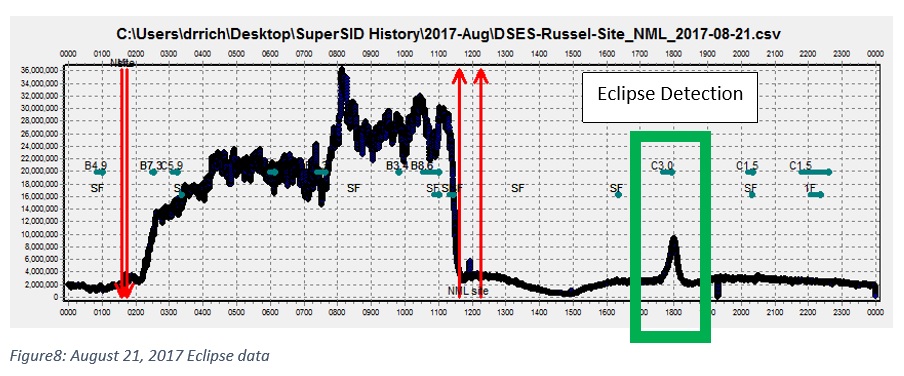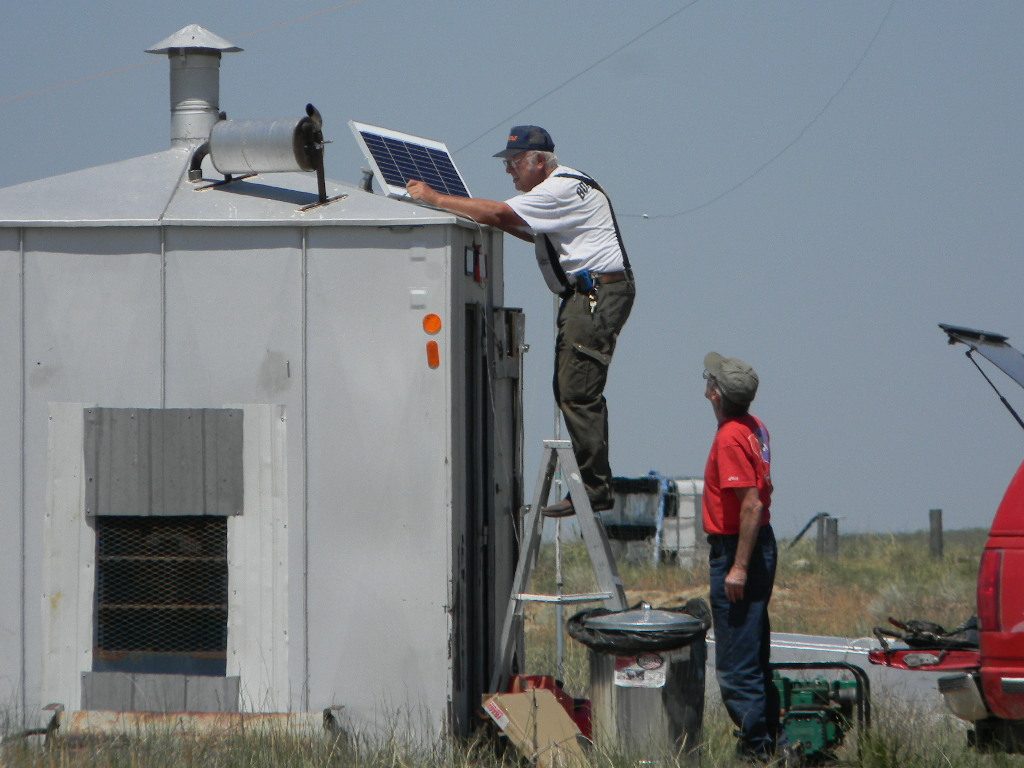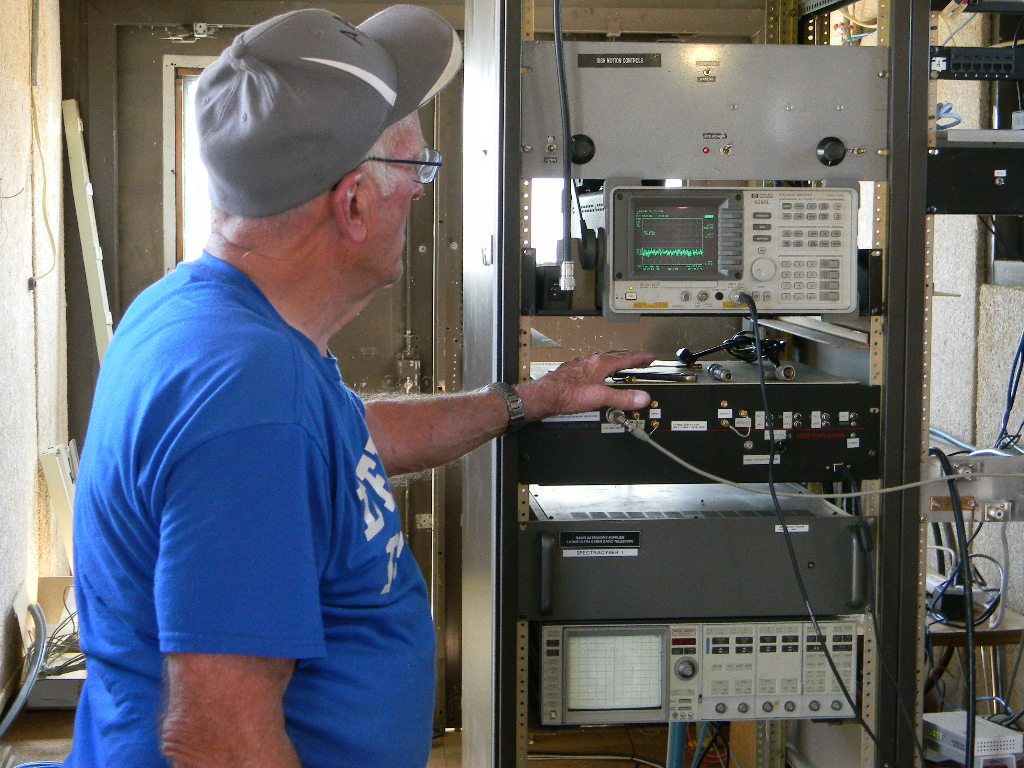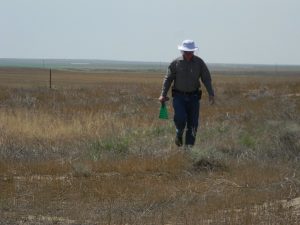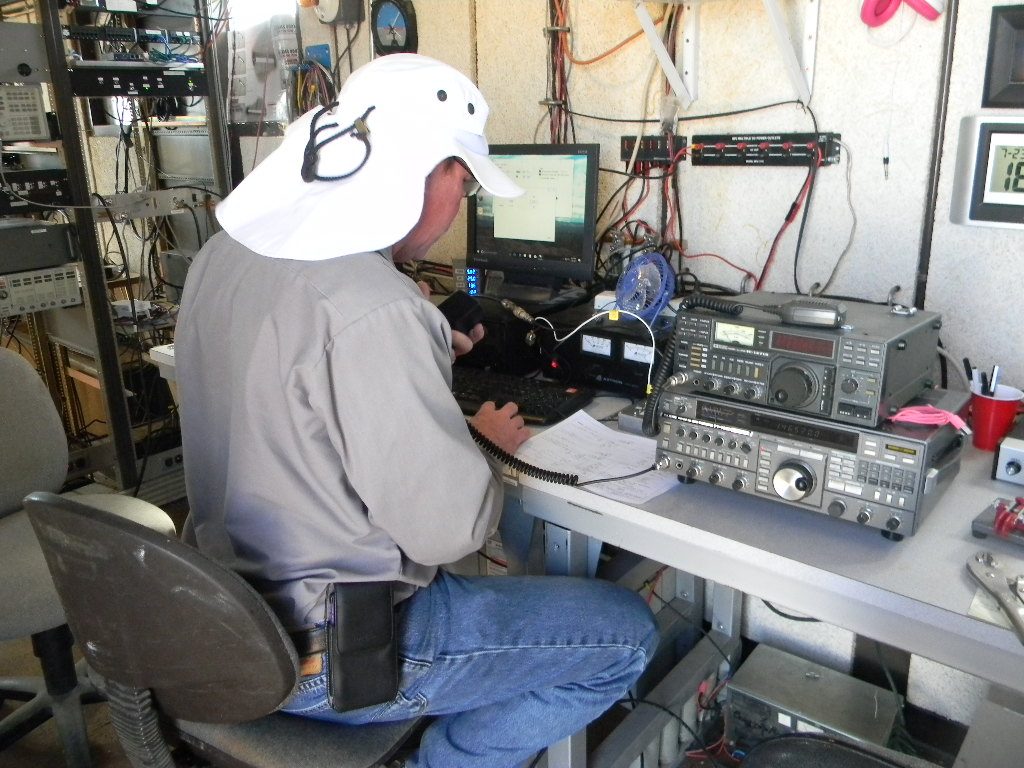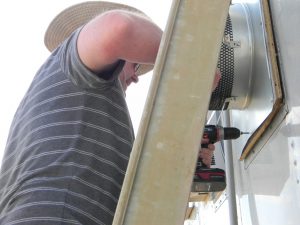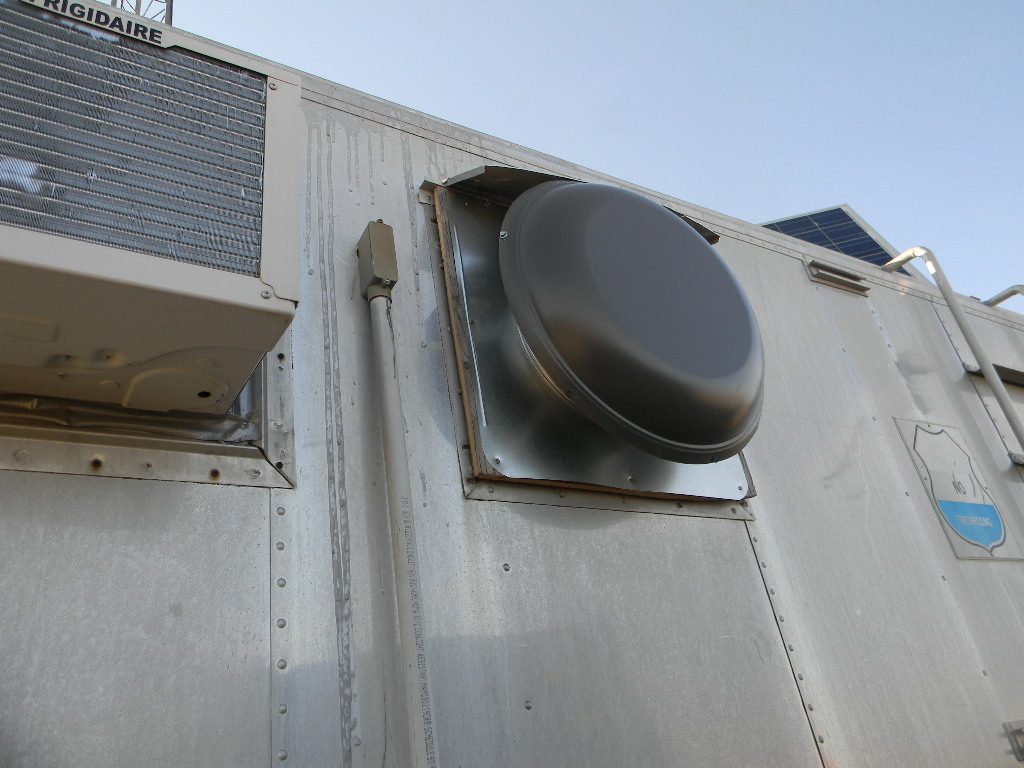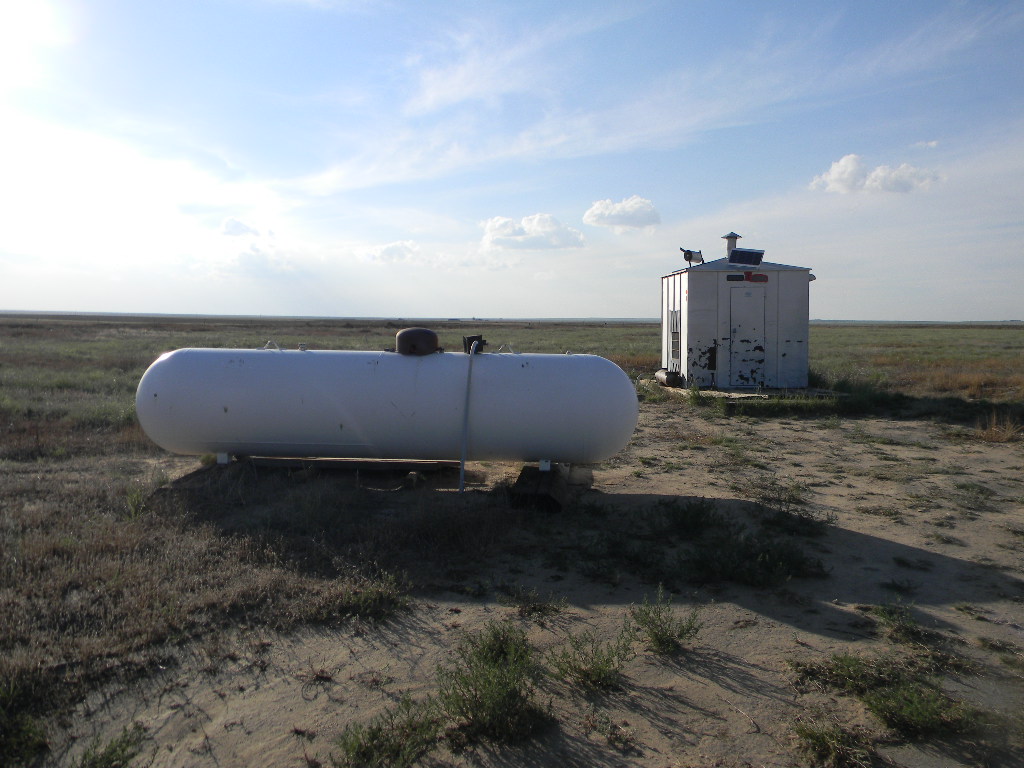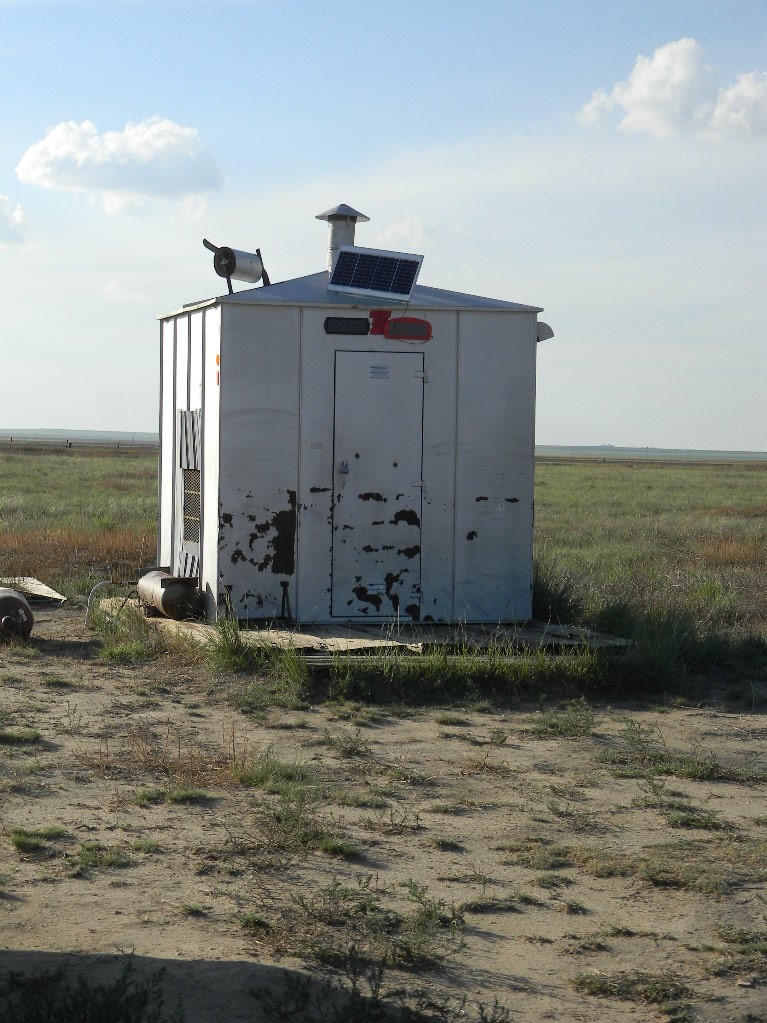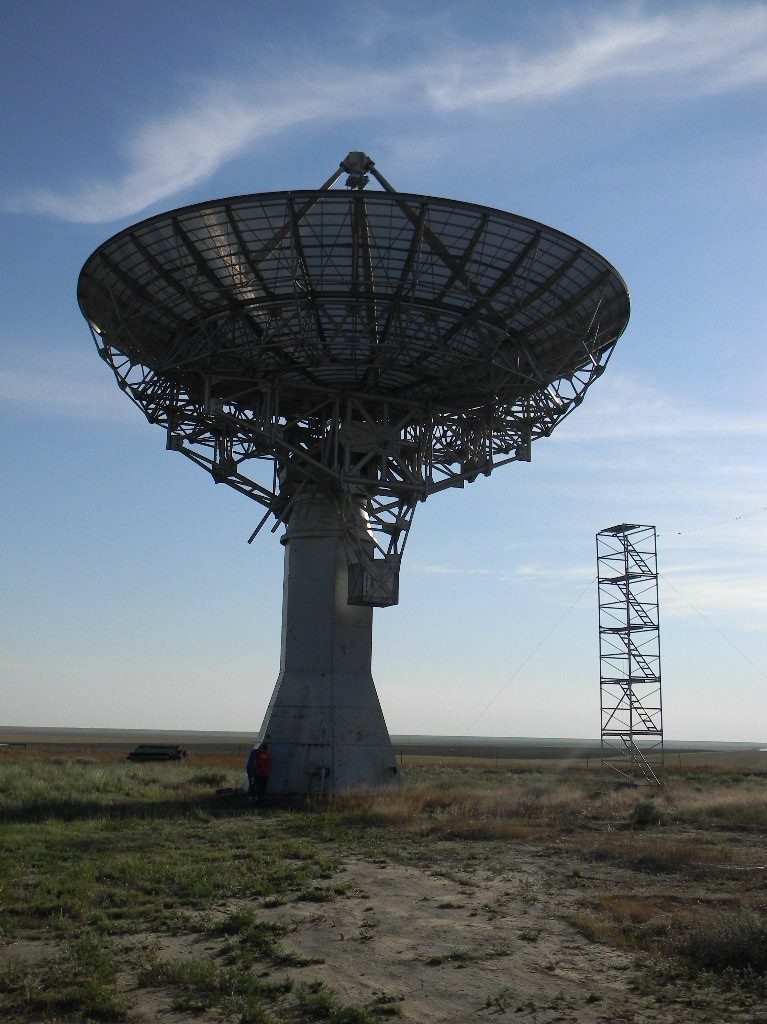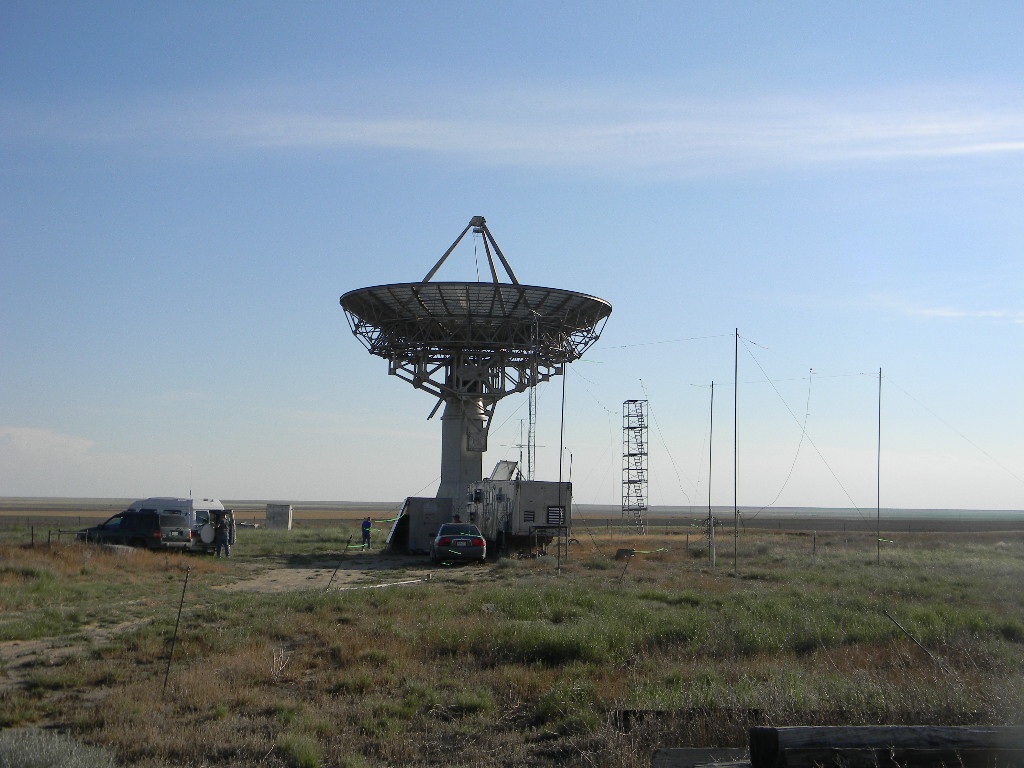The following video and text were posted by Bill Miller, DSES Secretary. Click the link to watch the 7 minute video. Bill traveled to Lusk, Wyoming to watch the the recent total solar eclipse. – Gary WA2JQZ
In this video of the August 21, 2017 Great American Total Solar Eclipse, shot on Main Street in Lusk, Wyoming, I used a Canon EOS Rebel T3 DSLR in manual focus and automatic exposure with a 250mm f/6.3 lens mounted on a non tracking tripod and a low cost 3 inch Celestron solar film filter suspended on a makeshift mount in front of the lens. Most of the stills came in around 1/320 sec at ISO-1600 with the filter. This worked reasonably well for the gusting wind that buffeted the filter and camera.
The first part of the video is a sequence of the partial eclipse leading up to the totality with a frame shot manually every 1.5 minutes and the camera repositioned every 6 to 8 frames to show the progression and movement of the sun and moon across the sky. The same was done for the partial phase after the totality. The two small dots to the left of the partially eclipsed sun are not stars but dead pixels in the camera which I didn’t realize were there until now.
The camera was changed to movie mode leading into the totality phase and the background audio captures the comments and excitement, we and some of the people around us experienced. Shortly after the “diamond ring” appeared at the onset of totality the solar filter was swung out of the way and the camera automatically adjusted movie exposure settings for direct unfiltered viewing of the totality. During the totality, planets and stars were visible and the movie captured Mercury, (what I originally called out as Venus) just to the lower left of the eclipsed sun.
When the “diamond ring” reappeared the solar filter was swung back into place to protect the camera imager. After a few minutes of post totality commentary from the bystanders the camera was returned to still mode and the outgoing partial eclipse sequence was again recorded in stills. The pre and post partial eclipse still images were added to the totality movie to edit the complete video.
Lessons learned: This technique was simple and worked reasonably well while allowing us to concentrate on experiencing the eclipse without having to worry too much about the camera, but If I could do it again with much more practice and gear I would:
- Use multiple cameras to capture the surrounding scene and darkness during the eclipse and a dedicated wide angle time-lapse camera for a wall framing shot.
- Use a time-lapse Intervalometer to precisely time the partial eclipse still shot sequence and also help stabilize the camera without touching it.
- Mount the camera on a tracking telescope mount set up for solar tracking so the sun stays centered in the frame for the entire 3 hour event.
- Use a much sturdier tripod such as that of my telescope and seek a sheltered location out of the wind on the side of a building to improve camera stability and comfort for the 3 hour event.
- Use a better solar filter or find a way to shield out ambient light leakage to the camera to reduce the aura or glare captured around the partial eclipsed sun, though some of this aura may have been due to smoke in the atmosphere from western wildfires.
I hope you enjoy this little 7 minute movie. Best Regards,
Bill Miller, DSES Secretary
Video download: http://dses.science/wp-content/uploads/2017/09/2017-08-21-Total-Eclipse-Movie-Final-LR.wmv

